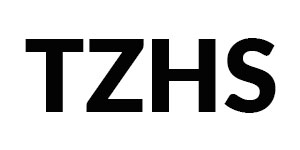Neuroplasticity, chronic traumatic encephalopathy (degenerative brain disease caused by concussions) and the harmful effects of radiation from wireless devices were among the topics presented by student researchers at Tappan Zee High School’s Science Symposium on May 22.
The Science Research Program, an elective taught by Chris Lorusso, is designed to provide students with a unique opportunity to research a topic of their choosing over a single year or multiple years. Students begin the research process with the selection of a topic of interest and importance and a review of published scientific literature on the topic. They then develop a hypothesis, design and conduct a research study and, finally, analyze and present their findings.
“The Science Research course provides students an opportunity to research any topic that truly resonates with them,” explains Mr. Lorusso. “It can deal with any area of science, biology, chemistry, physics, earth studies, engineering, psychology, or sociology. With the help of professional mentors to guide students, the ultimate goal is to have our students enter local and national competitions, and possibly have their work published.”
At the Symposium, Assistant Superintendent for Curriculum and Instruction Dr. Brian Culot spoke with students about their work. “This program is highly engaging for students because it enables them to demonstrate their creativity and communication abilities to a real audience,” he said. “Many students have shared that this experience helped them decide what they wanted to study or do after graduating from high school. Colleges are often impressed with students who have made a commitment to researching an important topic, particularly those that have the potential to have a positive impact on society.”
- Junior Fiona Donovan, a self-described “ethical vegan,” was motivated to study the environmental impact of the meat industry. Through her research, she learned about lab-grown meat and how it may offer a greener, more humane alternative for human consumption. “If there’s no suffering, no environmental impact, I would definitely consume it,” she says.
- Freshman Michael Morozyuk chose to replicate a Danish observational study of how radiation from a wifi router affects the growth of garden cress seedlings. His results echoed the original study: The cress positioned close to the router died, while the seedlings placed further away thrived. “I sleep with my phone next to my bed,” Michael says, noting that his findings prompted him to continue his research. “Next year, I’m hoping to get equipment to measure emissions and compare an iPhone with a wireless router.”
- Several athletes in the group drew on their sports experience to identify topics of interest. Sophomore Kennedy Outlaw has sustained three concussions over the course of her soccer career and created a survey to measure the prevalence of teen athletes who have had concussions and those at high-rise for chronic traumatic encephalopathy. A middle school sports injury drove junior Pat Castellano to investigate the relative benefits of elasticity training vs. strength training for reducing ligament damage. “I wanted to figure out why I got injured and the best way to prevent it from happening.” Based on what she’s learned this year about how music can enhance sports performance, freshman Scarlett Ottley hopes to conduct her own study with school athletics teams next year.
- Juniors Joe Seltzer and Michael Caramante studied novel therapies. Through his research, Joe discovered that immunotherapy approaches being used to treat human papillomavirus and tuberculosis may also be used for cancer. Michael hopes to extend his study of binaural beats and isochronic tones by investigating potential therapeutic applications for conditions such as posttraumatic stress disorder.
- Wondering how the loss of one sense heightens others was at the heart of junior Deev Patel’s work, which looked at neuroplasticity. Deev designed and conducted a study in which participants assembled a wooden puzzle in a series of timed trials, and then repeated the trials blindfolded. His discovery? “Practice makes perfect,” he shares, adding that participants who focused on competition fared worse than those who focused on strategy.
- Other students–freshman Michael Viggiani (stem cell therapy), freshman Alison Kyger (how cannabis use affects individuals with mood disorders), senior Sean Henry (how rats learn) and Owen Fillmore (Mars missions).
Junior Kevin Huang also exhibited and discussed a poster describing research he conducted, “The Effects of Sulfuric Acid on Mechanical Properties of Polycrystalline Ice,” through a Lamont-Doherty Earth Observatory research internship last summer, for which he was named a 2017 Siemens Competition semifinalist.
MENTOR VOLUNTEERS NEEDED! Community members with professional expertise in one of the topic areas students are researching are encouraged to contact Mr. Lorusso at clorusso@socsd.org about mentorship opportunities. We are always looking for professionals from many fields to mentor our student researchers.





You must be logged in to post a comment.